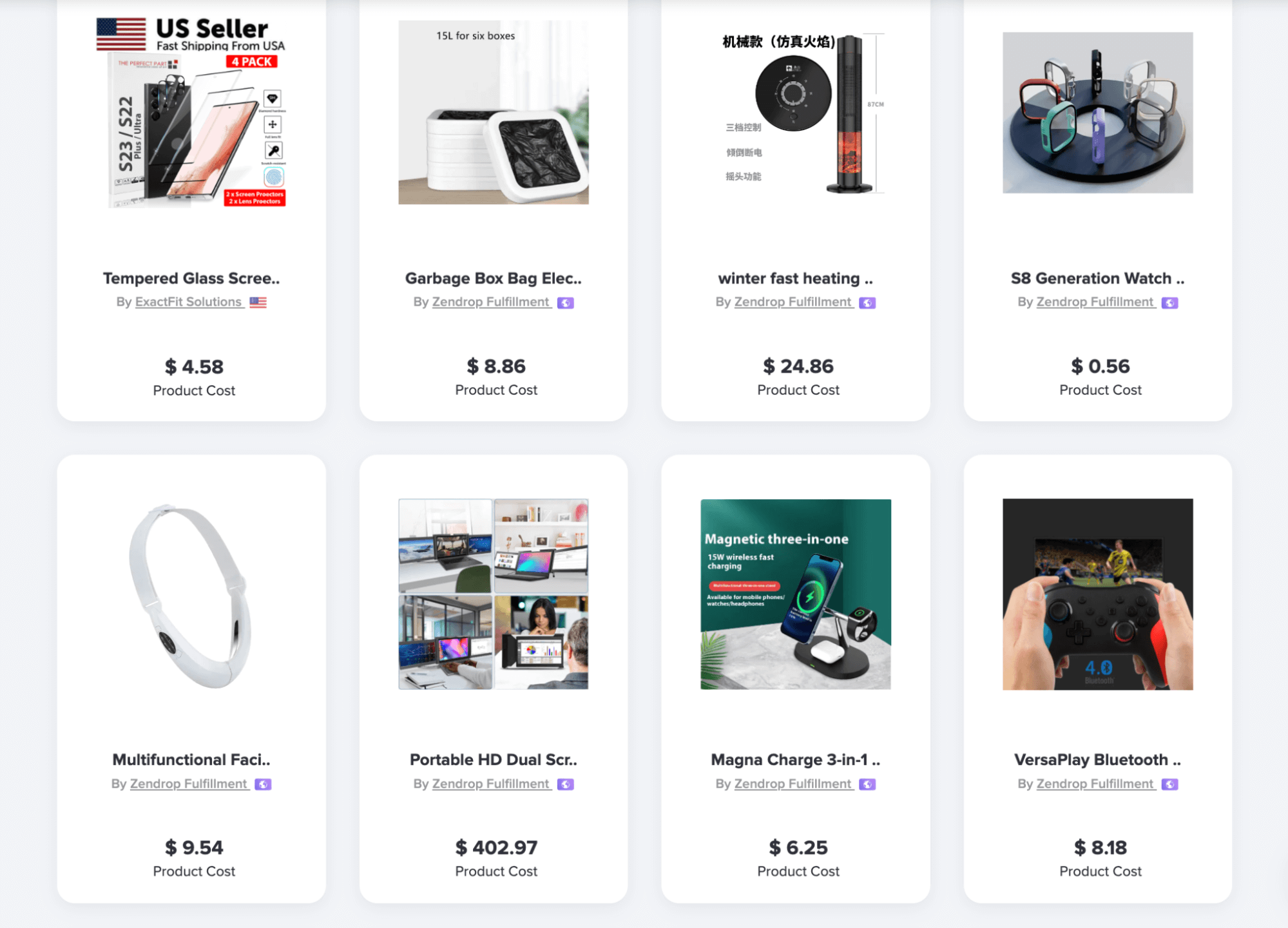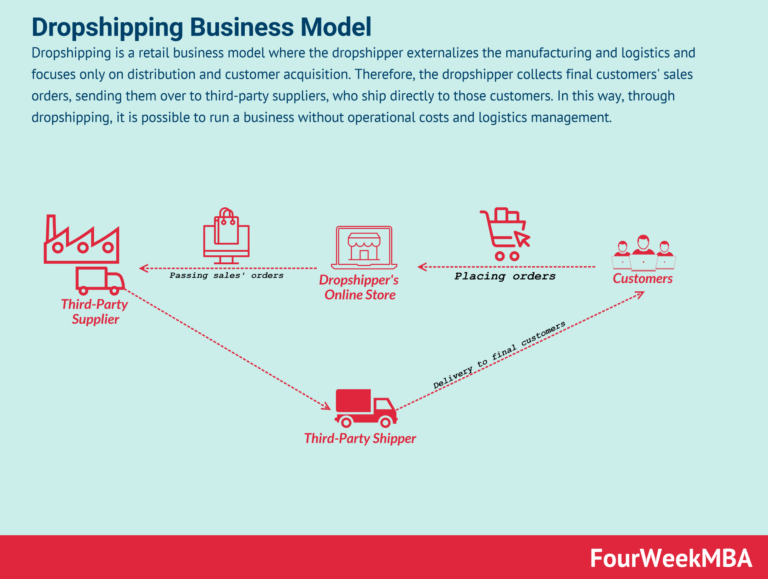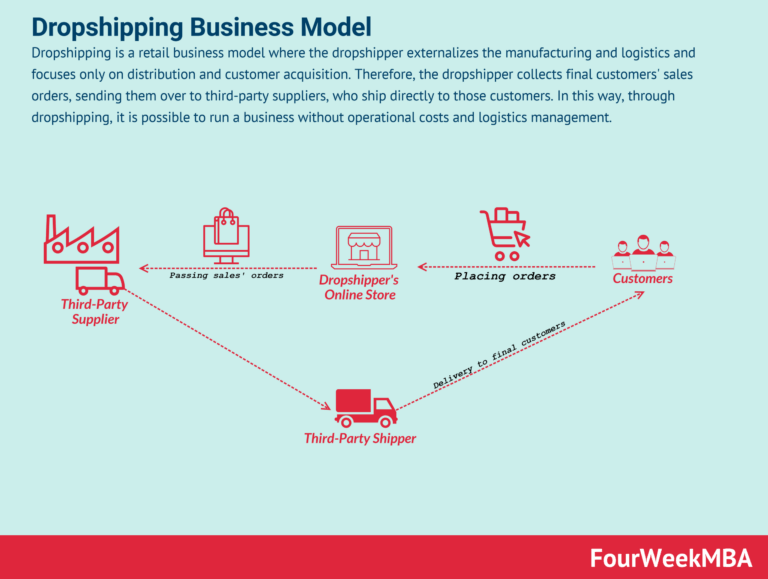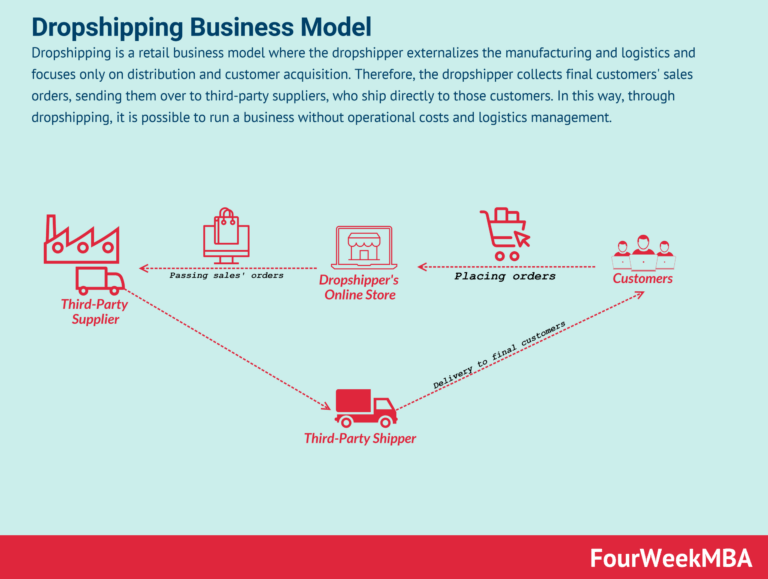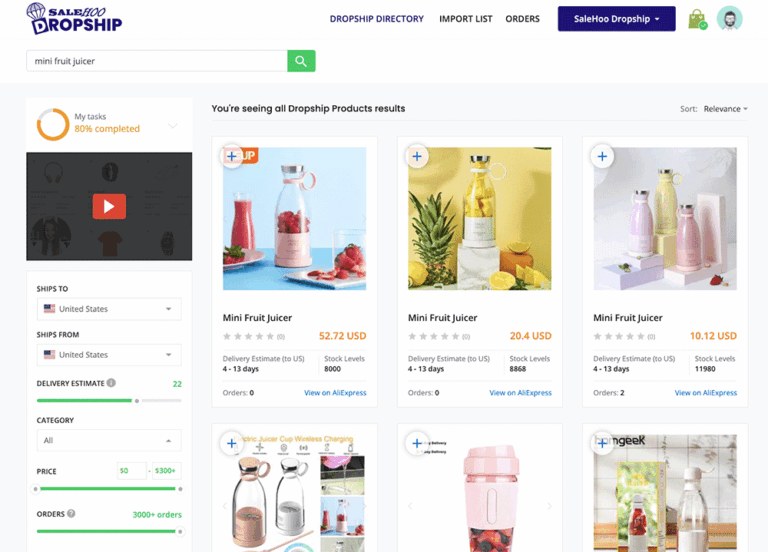How to Start Dropshipping in 2025 (A Beginner’s Guide)
Your Complete Guide to dropshipping electronics
Welcome to Your Dropshipping Journey
Congratulations on taking the first step toward realizing your entrepreneurial dreams! Starting your own business is an exciting and fulfilling journey, and dropshipping offers a unique pathway to success. If you’ve ever dreamt of running an online store without the hassle of managing inventory or shipping, you’re in the right place.
So, what exactly is dropshipping? Simply put, dropshipping is a retail fulfillment method where you, as the store owner, don’t keep the products you sell in stock. Instead, when a customer makes a purchase, you buy the item from a third-party supplier, who then ships it directly to the customer. This model allows you to offer a wide range of products without the need for upfront inventory costs, making it an attractive option for aspiring entrepreneurs like you.
One of the greatest appeals of dropshipping is its low startup cost. You can launch an online store with minimal investment, which significantly reduces financial risk. Additionally, dropshipping provides unparalleled flexibility—you can run your business from anywhere with an internet connection, allowing you to balance work and personal life effectively.
In this guide, you’ll discover a comprehensive roadmap to successfully start your dropshipping electronics business. We’ll cover everything from identifying trending products to selecting reliable suppliers, setting up your online store, and implementing effective marketing strategies. You’ll learn about the top electronics dropshipping suppliers, their offerings, shipping times, and how to navigate the competitive landscape of the electronics market.
Moreover, we’ll delve into the nuances of customer service, order management, and scaling your business once you’ve made your first sales. By the end of this guide, you’ll have all the knowledge and tools necessary to turn your vision into reality.
Remember, every successful entrepreneur started with a dream and a plan. With determination, the right resources, and the guidance provided in this guide, you too can build a thriving dropshipping business. Let’s embark on this exciting journey together and turn your entrepreneurial aspirations into a successful reality!
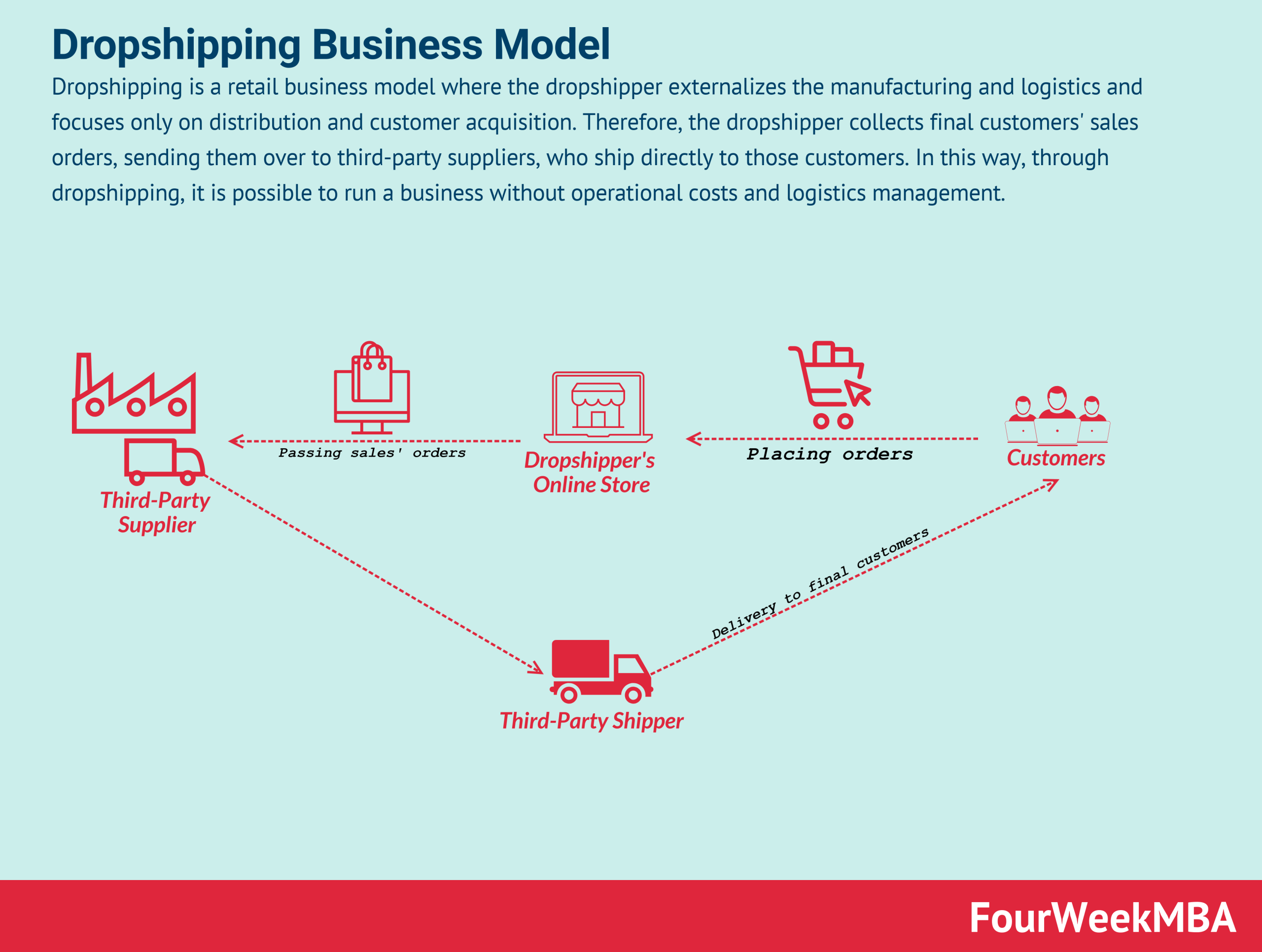
What You’ll Learn In This Guide
- Your Complete Guide to dropshipping electronics
- How Does Dropshipping Actually Work? A Step-by-Step Breakdown
- The Pros and Cons of Dropshipping: Is It Right for You?
- Step 1: Finding a Profitable Niche and Winning Products
- Step 2: Choosing the Right Dropshipping Suppliers
- Step 3: Building Your Online Store
- Step 4: Marketing Your Dropshipping Business to Get Sales
- Common Mistakes to Avoid as a Beginner
- Frequently Asked Questions (FAQs) about dropshipping electronics
- Conclusion: Your Next Steps to Launching Your Business
- Important Disclaimer
How Does Dropshipping Actually Work? A Step-by-Step Breakdown
Understanding the Dropshipping Model: A Step-by-Step Breakdown
Starting a dropshipping business can feel overwhelming, but breaking it down into manageable steps can simplify the process. Think of yourself as a digital storefront and a middleman—your role is to facilitate sales without holding inventory. Here’s how the dropshipping model works, step-by-step:
- Customer Places an Order on Your Online Store
- The journey begins when a customer visits your online store and finds a product they want to purchase. They add the item to their cart and proceed to checkout. This is the moment you capture their interest and their potential revenue.
-
Make sure your website is user-friendly and visually appealing to enhance the shopping experience and encourage purchases.
-
You Receive the Payment
- Once the customer completes their purchase, the payment is processed through your e-commerce platform (like Shopify or WooCommerce). The funds from the sale are transferred to your business account.
-
It’s crucial to have a reliable payment gateway set up to ensure smooth transactions. This step is where you earn a profit margin—ideally, the difference between your retail price and the wholesale price paid to your supplier.
-
You Forward the Order to Your Supplier
- After receiving the payment, the next step is to forward the order details to your chosen supplier. This typically involves sending the product information, customer shipping address, and payment for the wholesale price of the product.
-
Many dropshipping platforms automate this process, allowing you to streamline operations and save time. This is where choosing the right supplier becomes critical; look for one that is reliable, offers good quality products, and has favorable shipping times.
-
The Supplier Ships the Product Directly to the Customer
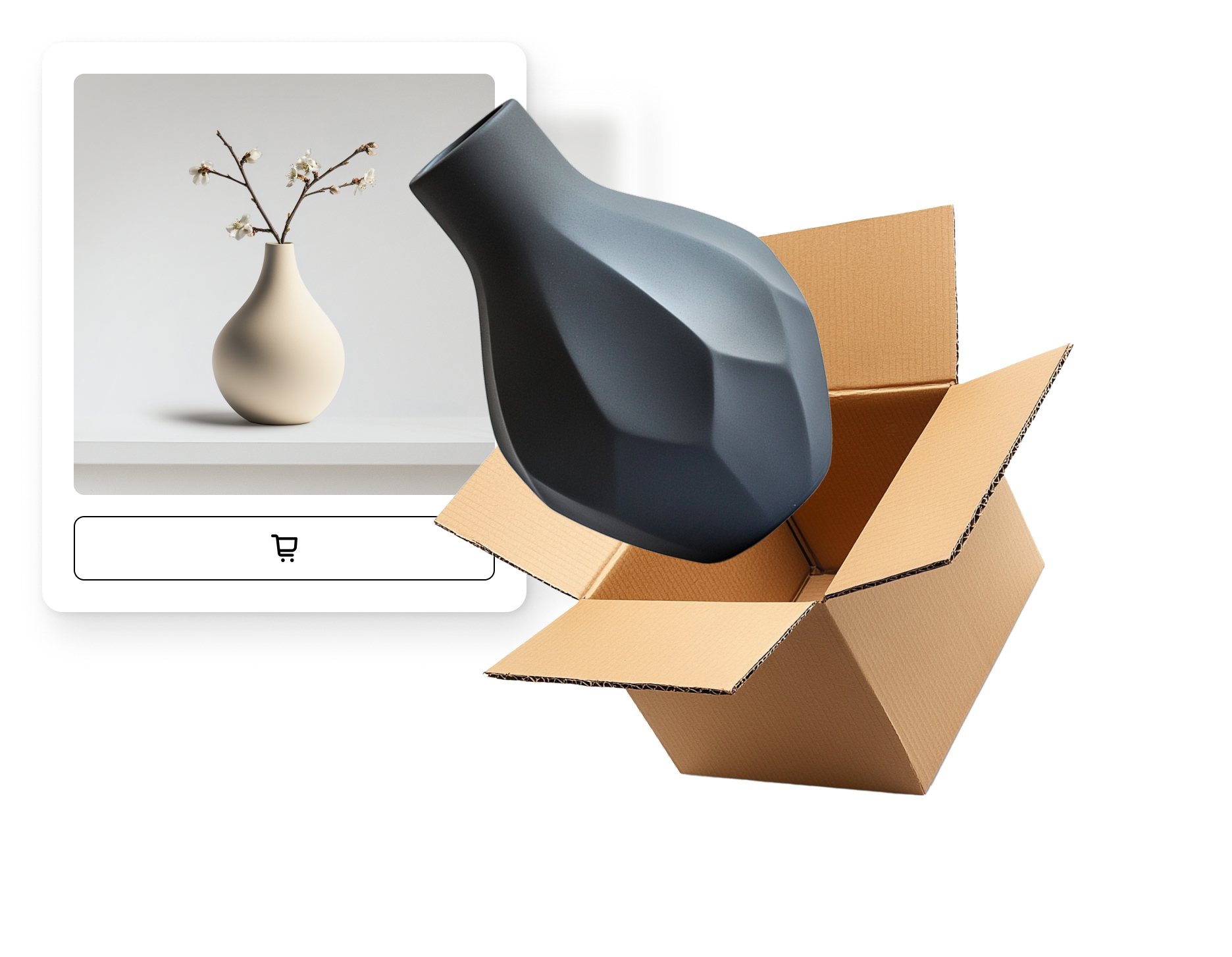
- Once the supplier receives your order, they pack and ship the product directly to your customer. This means you never handle the product yourself, which is one of the main advantages of dropshipping.
- The supplier takes care of logistics, including inventory management and shipping, allowing you to focus on marketing and customer service. Make sure to communicate with your supplier about shipping times and tracking information to keep your customers informed.
The Flow of Money and Goods
-
Money Flow: The customer pays you, and you then pay the supplier. This creates a cash flow model where you earn the difference between your retail price and the supplier’s wholesale price. For example, if you sell a gadget for $100 and your supplier charges you $70, your profit is $30.
-
Goods Flow: The product moves directly from the supplier to the customer, bypassing your physical location entirely. This is akin to being a restaurant that takes orders and sends them to a kitchen (the supplier) that prepares the meal without the restaurant ever needing to store or handle the food.
Conclusion
By understanding these steps, you can effectively manage your dropshipping business. Remember, your primary responsibilities include marketing your store, providing excellent customer service, and maintaining a strong relationship with your suppliers. As you embark on this journey, stay focused on delivering value to your customers and continuously optimizing your processes. With dedication and the right strategies, you’ll be well on your way to building a successful dropshipping business in the electronics niche.
The Pros and Cons of Dropshipping: Is It Right for You?
Advantages and Challenges of Dropshipping
| Advantages of Dropshipping (Pros) | Challenges of Dropshipping (Cons) |
|---|---|
| Low Financial Risk | Low Profit Margins |
| No need for large upfront inventory costs. | Margins can be thin due to competition. |
| Minimal Overhead Costs | High Competition |
| Limited need for physical space and staff. | Many entrepreneurs may enter the market. |
| Wide Product Selection | Supplier Reliability Issues |
| Access to a vast array of electronics. | Poor suppliers can lead to stock and quality issues. |
| Location Independence | Shipping Complexities |
| Operate your business from anywhere. | Shipping times can vary significantly. |
| Easy to Scale | Limited Control Over Branding |
| Adding new products is relatively easy. | Branding can be harder with third-party suppliers. |
| Automated Operations | Customer Service Challenges |
| Tools can streamline order processing. | Handling returns and customer inquiries can be tricky. |
| Flexibility in Niche Selection | Compliance and Legal Challenges |
| Ability to pivot and test new products easily. | Must navigate various regulations and taxes. |
Understanding the Advantages
One of the most compelling advantages of dropshipping is the low financial risk associated with it. Traditional retail businesses often require significant investment in inventory upfront. In dropshipping, you only purchase products after you’ve made sales, minimizing your financial exposure. This model allows aspiring entrepreneurs to start an e-commerce business without the burden of hefty startup costs, making it particularly attractive for beginners.
Another significant benefit is the minimal overhead costs. With no need for a physical store or extensive staff, you can run your dropshipping business from anywhere with an internet connection. This flexibility not only reduces costs but also allows you to maintain a work-life balance, a crucial aspect for many entrepreneurs.
Additionally, dropshipping provides access to a wide product selection. You can offer a variety of electronics without worrying about storage or inventory management. This flexibility enables you to test different niches and adapt quickly to market trends, which is essential in the fast-paced electronics industry. By partnering with reliable suppliers, you can ensure that you have a robust product offering that meets customer demands.
The location independence of dropshipping is another advantage. You can manage your business from anywhere, whether you’re at home, traveling, or even working from a coffee shop. This flexibility is particularly appealing to those looking to escape the traditional 9-to-5 grind.
Moreover, easy scalability is a hallmark of the dropshipping model. As your business grows, you can easily add new products and suppliers without the logistical headaches that come with managing physical inventory. This scalability allows you to focus on marketing and sales while your suppliers handle the fulfillment.
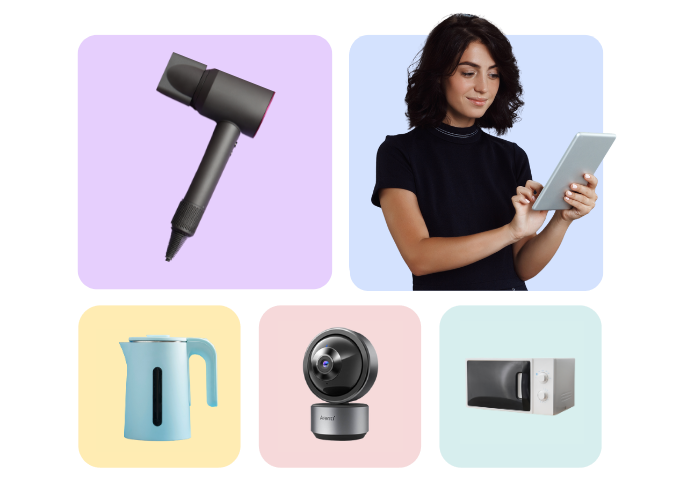
Navigating the Challenges
Despite its many advantages, dropshipping also comes with its share of challenges. One of the most significant drawbacks is the low profit margins often associated with this business model. Due to the competitive nature of the market, especially in the electronics niche, many dropshippers find it challenging to maintain healthy profit margins. This is particularly true when competing against established retailers who can afford to sell at lower prices.
High competition is another hurdle. The ease of entry into the dropshipping business means that many entrepreneurs are vying for the same customers. As a result, standing out in a crowded marketplace requires innovative marketing strategies and a strong brand identity.
Supplier reliability issues can also pose significant challenges. If your suppliers fail to deliver products on time or provide low-quality items, it directly impacts your reputation and customer satisfaction. It’s crucial to thoroughly vet suppliers and establish strong relationships to mitigate this risk.
In addition, shipping complexities can create customer dissatisfaction. Varying shipping times, especially when sourcing products from international suppliers, can lead to frustration for customers expecting quick delivery. Managing customer expectations around shipping is essential for maintaining good relationships.
Another challenge is the limited control over branding. As dropshippers, you often rely on third-party suppliers for products, which can make it challenging to create a unique brand identity. This lack of control can hinder your ability to differentiate your business from competitors.
Lastly, customer service challenges can arise in a dropshipping model. Handling returns, exchanges, and customer inquiries can be complicated when you don’t physically handle the products. Establishing clear communication channels and efficient processes is vital for maintaining customer satisfaction.
Conclusion
In summary, dropshipping can be a viable and attractive option for aspiring entrepreneurs looking to enter the electronics market with minimal investment. However, it’s essential to weigh the pros and cons carefully and prepare to navigate the challenges that come with this business model. By choosing reliable suppliers, focusing on branding, and implementing effective marketing strategies, you can position your dropshipping business for success in a competitive landscape.
Step 1: Finding a Profitable Niche and Winning Products
What Makes a Good Niche?
When starting a dropshipping business, selecting the right niche is crucial for long-term success. A good niche not only aligns with your interests but also fulfills market demand. Here are key characteristics of a profitable niche:
-
Market Demand: Ensure there is a significant demand for the products within the niche. Use tools like Google Trends to analyze search volume and consumer interest over time.
-
Low Competition: While high demand is vital, you want to avoid overcrowded markets. Conduct competitive analysis using tools like SEMrush or Ahrefs to evaluate the level of competition in your chosen niche.
-
Passion and Knowledge: Selecting a niche that resonates with your interests can make your entrepreneurial journey more enjoyable and sustainable. Your passion can translate into effective marketing and customer engagement.
-
Profit Margins: Look for niches with healthy profit margins. Ideally, products should allow for a markup of at least 20-50%. This ensures you can cover costs while still making a profit.
-
Trends and Longevity: Consider whether the niche is a trend or has longevity. Evergreen niches (like electronics) offer consistent demand, while trending niches can provide quick gains but may fade.
How to Brainstorm Niche Ideas
Generating niche ideas can be an exciting yet daunting task. Here are several strategies to help you brainstorm effectively:
-
Personal Interests and Hobbies: Start by listing your interests or hobbies. Think about the products you frequently buy or wish existed. This personal connection can lead to authentic marketing and customer engagement.
-
Marketplaces Research: Explore popular e-commerce platforms like Amazon, eBay, or Etsy. Look for categories with high sales volumes and positive reviews. The “Best Sellers” or “Trending” sections can reveal lucrative niches.
-
Social Media Insights: Use social media platforms like Instagram, Pinterest, and TikTok to identify trending topics and products. Look for popular hashtags, influencer partnerships, and viral content to gather insights into consumer preferences.
-
Forums and Online Communities: Engage in forums like Reddit or specialized Facebook groups. Observe discussions to identify common problems or desires among users. This can reveal potential product opportunities within a niche.
-
Keyword Research: Utilize keyword research tools like Ubersuggest or Google Keyword Planner to identify search terms related to your interests. High search volumes with low competition can indicate a profitable niche.
Validating Your Niche
Once you’ve brainstormed potential niches, it’s essential to validate them before diving in. Here’s how to ensure your niche has real market potential:
-
Conduct Surveys: Create surveys using platforms like Google Forms or SurveyMonkey. Share them in relevant online communities to gather feedback on your niche ideas and potential products.
-
Analyze Competitors: Dive deep into your competitors’ offerings. Analyze their product range, pricing strategies, and customer reviews. Tools like SimilarWeb can provide insights into their traffic and audience demographics.
-
Test Products: Before fully committing, consider testing a few products within the niche. Use platforms like eBay to list items and gauge interest. If products sell, it’s a good sign of market demand.
-
Seek Feedback: Share your niche idea with friends, family, or mentors. Their insights can help you refine your approach and identify potential pitfalls.
-
Monitor Trends: Keep an eye on industry reports, blogs, and news articles relevant to your niche. Tools like Google Alerts can notify you of new developments and trends, helping you stay ahead of the curve.
Methods for Finding Winning Products
Finding winning products to dropship is an ongoing process. Here are effective methods to streamline your product research:
-
Supplier Marketplaces: Utilize platforms like AliExpress, Oberlo, or Spocket to discover trending products. Look for items with high order volumes and positive reviews. These indicators often signal strong market demand.
-
Social Media Trend Tools: Leverage tools like BuzzSumo or TrendSpottr to identify trending products and topics across social media platforms. Pay attention to engagement metrics to determine what resonates with consumers.
-
Criteria for Good Dropshipping Products:
- Price Point: Aim for products priced between $10 and $200. This range is often affordable for most consumers while allowing for decent profit margins.
- Unique Selling Proposition (USP): Choose products that are not readily available in local stores. This uniqueness can set your business apart and attract more customers.
-
Problem Solving: Focus on products that solve specific problems for consumers. Whether it’s a gadget that enhances convenience or a tech accessory that simplifies usage, problem-solving products often have a ready market.
-
Customer Reviews and Feedback: Analyze customer reviews on competitor websites or marketplaces. Identify common pain points or desired features. This insight can guide your product selection and marketing strategies.
-
Seasonal and Event-Driven Products: Stay aware of upcoming holidays, events, or seasons. Products that align with these occasions often see spikes in demand. For example, electronics like drones might sell better during holiday seasons.
-
Google Trends and Keyword Analysis: Use Google Trends to monitor the popularity of specific products over time. Keyword analysis can reveal what consumers are actively searching for, helping you align your product offerings with market demand.
Conclusion
Finding a profitable niche and winning products is a crucial step in establishing a successful dropshipping electronics business. By understanding what makes a good niche, brainstorming effectively, validating your ideas, and employing various methods to discover winning products, you can set a strong foundation for your entrepreneurial journey. Remember, persistence and adaptability are key; the market is ever-changing, and staying informed will help you maintain a competitive edge. Embrace the process, learn continuously, and watch your business thrive!
Step 2: Choosing the Right Dropshipping Suppliers
Understanding the Importance of Choosing the Right Dropshipping Suppliers
Selecting the right dropshipping suppliers is a crucial step in setting up your electronics dropshipping business. The suppliers you choose can significantly impact your operational efficiency, customer satisfaction, and overall profitability. Here’s a comprehensive guide to help you navigate the process of finding reliable dropshipping suppliers.
Major Platforms for Dropshipping Electronics
AliExpress
Pros:
– Wide Product Range: AliExpress offers a vast selection of electronics, from phone accessories to gadgets, making it easy to find niche products.
– Low Prices: The competitive pricing allows for higher profit margins, especially when targeting budget-conscious consumers.
– No Membership Fees: There are no upfront costs to start dropshipping from AliExpress, making it accessible for beginners.
Cons:
– Long Shipping Times: Depending on the supplier’s location, shipping times can range from 3 to 45 days, which may frustrate customers expecting quick delivery.
– Quality Variability: The quality of products can be inconsistent, as suppliers vary widely in their standards. It’s essential to vet suppliers carefully.
– Limited Customer Support: Communication with suppliers can be challenging, and response times may be slow.
CJ Dropshipping
Pros:
– Customization Options: CJ Dropshipping allows for custom branding and packaging, which can enhance your brand identity.
– Warehouses Worldwide: With warehouses in multiple countries, you can benefit from faster shipping times, especially for US-based customers.
– Integrated Services: CJ offers product sourcing, order fulfillment, and a range of automation tools to streamline your operations.
Cons:
– Membership Fee for Premium Services: While basic services are free, accessing advanced features may require a subscription.
– Complexity for Beginners: The platform can be overwhelming for newcomers due to its extensive features and options.
– Shipping Costs: Depending on the products and locations, shipping fees can add up, impacting your profit margins.
USA-Based Suppliers
Pros:
– Faster Shipping Times: USA-based suppliers typically offer shorter shipping times, often within 2 to 7 business days, which can lead to higher customer satisfaction.
– Quality Assurance: Many USA-based suppliers have strict quality control measures, reducing the chances of receiving defective products.
– Easier Returns: Handling returns and exchanges is generally more straightforward when working with local suppliers.
Cons:
– Higher Costs: Products sourced from US suppliers may be more expensive than those from overseas, which can reduce your profit margins.
– Limited Product Variety: The range of electronics available may be narrower compared to global platforms like AliExpress or CJ Dropshipping.
– Potential Membership Fees: Some suppliers may require a membership or subscription fee to access their products.
What to Look for in a Good Supplier
Finding the right supplier involves assessing several key factors. Here’s a checklist to guide you in your search:
- Communication:
- Ensure the supplier is responsive and easy to communicate with.
-
Check if they offer support in your preferred language.
-
Shipping Times:
- Review their shipping policies and average delivery times.
-
Consider suppliers with multiple warehouses to expedite shipping.
-
Product Quality:
- Look for suppliers with positive reviews and high ratings from other dropshippers.
-
Request samples if possible to assess product quality firsthand.
-
Return Policies:
- Understand the supplier’s return and refund policies.
-
Ensure they offer a reasonable return window and process for defective items.
-
Pricing Structure:
- Compare product prices to ensure you can maintain healthy profit margins.
-
Be aware of any hidden fees, such as membership costs or shipping charges.
-
Reputation:
- Research the supplier’s reputation through online reviews and ratings.
-
Join dropshipping forums or communities to gather feedback from other entrepreneurs.
-
Product Range:
- Ensure the supplier has a diverse range of products within your niche.
-
Look for suppliers that frequently update their inventory to keep up with trends.
-
Ease of Integration:
- Check if the supplier offers integration with e-commerce platforms like Shopify, WooCommerce, or others.
- This can streamline order processing and inventory management.
Conclusion
Choosing the right dropshipping suppliers is a pivotal step in launching and growing your electronics dropshipping business. By evaluating platforms like AliExpress, CJ Dropshipping, and USA-based suppliers, you can find options that best suit your needs. Use the provided checklist to ensure you select reliable partners that can help you provide excellent service to your customers.
Starting a dropshipping business can be a rewarding journey, and with the right suppliers by your side, you’ll be well on your way to building a successful online store. Stay proactive, do your research, and don’t hesitate to reach out to suppliers with any questions. Your diligence will pay off in the long run!
Step 3: Building Your Online Store
Setting Up Your Online Store with Shopify
Embarking on your dropshipping journey in the electronics niche is an exciting venture, and setting up your online store is one of the first crucial steps. Shopify is a leading platform for e-commerce and is particularly favored for dropshipping due to its user-friendly interface and powerful features. Here’s a step-by-step guide to help you build your online store on Shopify.
1. Choosing a Shopify Plan
Shopify offers a variety of pricing plans to suit different business needs. As a beginner, you can start with the Basic Shopify Plan, which is typically around $39/month. This plan includes everything you need to set up a functional online store, including:
- An online storefront
- Unlimited products
- 24/7 customer support
- Sales channels (like online marketplaces and social media)
As your business grows, you can always upgrade to higher-tier plans that offer advanced features like professional reports and lower transaction fees. Take advantage of the 14-day free trial to explore the platform and understand its features before committing to a plan.
2. Picking a Theme
Once you’ve chosen a plan, it’s time to select a theme for your store. Shopify has a wide range of free and paid themes that cater to various niches, including electronics. Here’s how to choose the right theme:
- Filter by Category: Use the theme store’s filter options to find themes designed specifically for electronics or technology.
- Mobile Responsiveness: Ensure that the theme is mobile-friendly, as a significant portion of online shopping is done on mobile devices.
- Customization Options: Look for themes that allow you to customize colors, fonts, and layouts easily.
- User Reviews: Check reviews and ratings from other users to gauge the performance and usability of the theme.
After selecting a theme, install it and start customizing it to reflect your brand’s identity. You can modify elements like the logo, color scheme, and navigation menus to make your store uniquely yours.
3. Setting Up Essential Pages
Your online store needs essential pages that provide information and build trust with your customers. Here are the key pages to set up:
- About Us: Share your story, mission, and values. This helps establish a connection with potential customers.
- Contact Page: Make it easy for customers to reach you. Include a contact form, email address, and any social media links.
- Policies: Clearly outline your store’s policies, including:
- Shipping Policy: Explain shipping times, costs, and methods.
- Return Policy: Detail your return and refund process.
- Privacy Policy: Inform customers how you handle their data.
Creating these pages not only improves customer experience but also enhances your store’s credibility.
4. Installing Key Apps
To streamline your dropshipping process, you’ll want to install essential apps. Here are a couple of must-haves:
- Product Import Tool: Apps like DSers or CJ Dropshipping allow you to easily import products from suppliers into your store. They provide automation features that simplify order fulfillment and inventory management.
- Email Marketing: Integrate email marketing apps like Klaviyo or Omnisend to engage with your customers through newsletters, promotions, and abandoned cart recovery.
- Analytics Tools: Apps like Google Analytics can help you track visitor behavior, sales performance, and marketing effectiveness.
Browse the Shopify App Store to find apps that fit your needs, and take advantage of any free trials to test their functionality.
5. Setting Up Payment Gateways
To accept payments from your customers, you need to set up payment gateways. Shopify supports various options, including:
- Shopify Payments: This is the easiest option to set up and allows you to accept credit cards directly without any additional fees.
- PayPal: Widely trusted by customers, setting up PayPal is straightforward and can enhance your store’s credibility.
- Alternative Payment Methods: Consider adding other payment options like Stripe, Apple Pay, or Google Pay to cater to different customer preferences.
To set up payment gateways, navigate to the “Settings” section of your Shopify admin panel, click on “Payments,” and follow the prompts to configure your chosen payment methods.
Exploring WooCommerce as an Alternative
While Shopify is an excellent choice for beginners, you may also consider WooCommerce if you prefer a WordPress-based solution. WooCommerce is a plugin that turns your WordPress site into a fully functional online store. It offers great flexibility and a wide range of themes and plugins, but it may require more technical knowledge to set up and maintain than Shopify.
Conclusion
Setting up your online store on Shopify is a manageable yet vital step in your dropshipping journey. By choosing the right plan, theme, and essential apps, and by establishing clear policies and payment gateways, you’ll create a solid foundation for your electronics dropshipping business. Remember, the goal is to create an engaging, trustworthy shopping experience for your customers. Embrace this process, and soon you’ll be on your way to running a successful online store!
Step 4: Marketing Your Dropshipping Business to Get Sales
Social Media Marketing (TikTok & Instagram)
Social media platforms like TikTok and Instagram are vital for building brand awareness and driving traffic to your dropshipping store. These platforms allow you to showcase your products creatively and engage with your target audience.
1. Create Engaging Content
- Tip: Use high-quality images and videos that highlight your electronics. Showcase products in action, such as unboxing videos or tutorials.
- Example: If you’re dropshipping headphones, create a short video demonstrating sound quality or noise cancellation features. Use trending music to make it more appealing.
2. Leverage Influencer Partnerships
- Tip: Collaborate with influencers in the electronics niche to reach a broader audience. Look for micro-influencers who have engaged followers.
- Example: Reach out to tech reviewers on Instagram to send them a product for review. Their audience trusts their opinions, which can drive traffic to your store.
3. Utilize Stories and Reels
- Tip: Use Instagram Stories and Reels to share product updates, promotions, or behind-the-scenes content. These features are perfect for short, engaging snippets.
- Example: Create a series of Stories showing “A Day in the Life” of your dropshipping business, including packaging orders or setting up products.
4. Run Contests and Giveaways
- Tip: Organize contests to encourage user-generated content. Ask followers to tag friends or post photos with your products.
- Example: Host a giveaway where participants must follow your account, like a post, and tag friends. This increases engagement and grows your follower base.
5. Engage with Your Audience
- Tip: Respond to comments and messages promptly. Show appreciation for user-generated content by reposting it.
- Example: If a customer shares a photo of your product, repost it on your story and thank them. This builds a community and fosters loyalty.
Paid Advertising (Facebook/Instagram Ads)
Investing in paid advertising can yield quick results and targeted traffic to your dropshipping store. Facebook and Instagram ads are powerful tools for reaching specific demographics.
1. Define Your Target Audience
- Tip: Use Facebook’s audience targeting features to hone in on your ideal customers based on age, interests, and behaviors.
- Example: If you’re selling gaming accessories, target users interested in gaming consoles, video games, and related pages.
2. Create Compelling Ad Copy
- Tip: Write clear, concise, and enticing ad copy that highlights the benefits of your products. Use strong calls-to-action (CTAs).
- Example: Instead of just saying, “Buy our headphones,” you could say, “Experience crystal-clear sound with our noise-canceling headphones – perfect for your daily commute!”
3. Use High-Quality Visuals
- Tip: Invest in professional photography or graphics for your ads. Eye-catching visuals will increase click-through rates.
- Example: Showcase your electronics with vibrant colors and clean backgrounds. For example, a sleek laptop on a stylish desk can create a desirable lifestyle image.
4. A/B Testing
- Tip: Run A/B tests on different ad formats, images, and copy to see what resonates best with your audience.
- Example: Test two different images for the same product and analyze which one receives more engagement. Use the winning ad for a larger campaign.
5. Retargeting
- Tip: Implement retargeting ads to reach users who have previously visited your site but did not make a purchase.
- Example: Create a retargeting ad offering a discount to users who added products to their cart but didn’t complete the purchase.
Search Engine Optimization (SEO)
Optimizing your dropshipping store for search engines can drive organic traffic and improve your visibility over time. Here are actionable tips to get started with SEO.
1. Keyword Research
- Tip: Use tools like Google Keyword Planner or Ubersuggest to identify relevant keywords for your products.
- Example: If you’re selling portable chargers, target keywords like “best portable charger for iPhone” or “fast charging power bank.”
2. Optimize Product Descriptions
- Tip: Write unique and engaging product descriptions that incorporate your target keywords naturally.
- Example: Instead of “This is a great Bluetooth speaker,” write, “Enjoy high-quality sound with our Bluetooth speaker, perfect for outdoor gatherings and home use.”
3. Improve Site Speed
- Tip: Ensure your website loads quickly, as page speed is a ranking factor for Google. Optimize images and minimize plugins.
- Example: Use tools like Google PageSpeed Insights to analyze your site’s speed and get recommendations for improvement.
4. Create Valuable Content
- Tip: Start a blog related to your niche to provide valuable information and attract organic traffic. This could include product guides, reviews, or tech tips.
- Example: Write a blog post titled “Top 5 Must-Have Gadgets for Tech Lovers in 2023” and link relevant products from your store.
5. Build Backlinks
- Tip: Collaborate with tech blogs and websites to get backlinks to your store. Guest posts can be an excellent way to achieve this.
- Example: Write a guest post on a tech review site about the benefits of a specific product you sell and include a link to your store.
Email Marketing
Email marketing remains one of the most effective strategies for converting leads into customers and retaining existing ones. Here’s how to leverage it for your dropshipping business.
1. Build an Email List
- Tip: Use pop-ups on your website to encourage visitors to sign up for your newsletter in exchange for discounts or exclusive offers.
- Example: Offer a 10% discount on the first order for subscribers. This can help grow your list quickly.
2. Segment Your Audience
- Tip: Segment your email list based on customer behavior, preferences, or purchase history to send targeted campaigns.
- Example: Create separate lists for first-time buyers, repeat customers, and those who abandoned their carts. Tailor messages to each segment.
3. Craft Engaging Newsletters
- Tip: Send regular newsletters that include product updates, promotions, and valuable content related to your niche.
- Example: Feature a “Product of the Month” with a discount, alongside tips on how to use it effectively.
4. Automate Your Campaigns
- Tip: Use email marketing tools like Mailchimp or Klaviyo to automate welcome emails, abandoned cart reminders, and follow-ups.
- Example: Set up an automated email to remind customers about items left in their cart, offering a small discount to encourage completion of the purchase.
5. Analyze and Optimize
- Tip: Regularly analyze your email campaigns’ performance metrics, such as open rates and click-through rates, to optimize future campaigns.
- Example: If you notice higher engagement with subject lines that include questions, adjust your approach accordingly to improve performance.
By implementing these marketing strategies, you can effectively promote your dropshipping electronics business, engage with your audience, and ultimately drive sales. Remember, consistency and adaptation are key in the ever-evolving e-commerce landscape. Keep learning and refining your strategies to achieve long-term success!
Common Mistakes to Avoid as a Beginner
1. Choosing a Bad Niche
One of the most significant mistakes beginners make is selecting a niche that is either overly saturated or lacks demand. In the electronics sector, it’s vital to choose a niche that not only interests you but also has a viable market.
Solution: Conduct thorough market research using tools like Google Trends, social media platforms, and keyword research tools to identify trending products. Opt for a niche with a balance of demand and competition. For example, consider emerging technologies or specialized electronics, such as home automation gadgets, which may not be oversaturated.
2. Not Testing Products
Another common pitfall is failing to test products before listing them in your store. Many beginners rush to add a variety of items without assessing quality, which can lead to high return rates and customer dissatisfaction.
Solution: Order samples of potential products from your suppliers to evaluate their quality and functionality. This practice not only helps you understand the product but also allows you to create genuine product descriptions and marketing content based on your experience.
3. Poor Customer Service
Customer service is often overlooked in the dropshipping business, yet it is crucial for building trust and retaining customers. Beginners may neglect timely communication or fail to address customer concerns effectively.
Solution: Establish clear communication channels and respond promptly to customer inquiries. Consider using automated response tools for common questions, and ensure you have a clear return and refund policy. Excellent customer service can differentiate you from competitors and encourage repeat business.
4. Ignoring Shipping Times
Shipping times can significantly impact customer satisfaction. Many beginners underestimate the importance of transparent shipping information, leading to frustration when customers experience delays.
Solution: Be upfront about shipping times on your product pages. Choose suppliers with reasonable shipping options and consider using local suppliers to reduce delivery times. If working with international suppliers, provide clear timelines and update customers on their order status.
5. Unrealistic Profit Expectations
Many beginners enter the dropshipping business with inflated profit expectations, often driven by success stories they read online. This can lead to disappointment and frustration when actual profits fall short.
Solution: Set realistic profit margins by calculating all costs, including product prices, shipping fees, advertising, and platform fees. Aiming for a profit margin of 15-30% is typically more achievable. Focus on building a sustainable business rather than making quick profits.
6. Not Building a Brand
Beginners often make the mistake of treating their dropshipping store like a simple transactional website rather than a brand. This can result in a lack of customer loyalty and recognition.
Solution: Invest time in creating a unique brand identity. Develop a professional logo, consistent branding across your website and social media, and a compelling story that connects with your target audience. Building a brand can foster customer loyalty and increase perceived value.
7. Overlooking Marketing Strategies
Many aspiring dropshippers underestimate the importance of marketing. They may launch their stores but neglect to implement effective marketing strategies to attract customers.
Solution: Create a comprehensive marketing plan that includes SEO, social media marketing, email campaigns, and paid advertising. Utilize platforms like Facebook and Instagram to showcase your products and engage with potential customers. Regularly analyze your marketing efforts and adjust your strategies based on performance data.
8. Failing to Optimize the Website
A poorly designed website can deter potential customers. Beginners often overlook website optimization, leading to slow loading times and a confusing user experience.
Solution: Invest in a user-friendly and mobile-optimized website. Ensure that your store loads quickly and that navigation is intuitive. Use high-quality images and compelling product descriptions to enhance the shopping experience. Regularly test your website’s performance and make necessary adjustments.
9. Not Staying Updated with Trends
The electronics market is constantly evolving, and beginners often fail to keep up with the latest trends and technologies. This oversight can lead to missed opportunities and outdated inventory.
Solution: Subscribe to industry newsletters, follow relevant blogs, and engage in online communities related to electronics. Staying informed about new products and market trends will help you adapt your offerings and maintain a competitive edge.
10. Neglecting Analytics
Finally, many beginners ignore the importance of analytics and performance tracking. Without monitoring key metrics, it’s challenging to understand what works and what doesn’t.
Solution: Use analytics tools like Google Analytics and Shopify Analytics to track customer behavior, sales trends, and website performance. Regularly review this data to make informed decisions about product offerings, marketing strategies, and website improvements.
By avoiding these common mistakes and implementing the suggested solutions, you’ll be better positioned to succeed in the electronics dropshipping business. Remember, the journey may be challenging, but with persistence and a willingness to learn, you can build a thriving online store.
Frequently Asked Questions (FAQs) about dropshipping electronics
1. What is dropshipping, and how does it work in the electronics niche?
Dropshipping is a retail fulfillment method where you, the retailer, don’t hold inventory. Instead, when a customer orders a product from your online store, you purchase the item from a third-party supplier who ships it directly to the customer. In the electronics niche, this means you can sell various gadgets, accessories, and devices without the overhead costs associated with stocking inventory.
2. How much money do I need to start a dropshipping electronics business?
Starting a dropshipping business can be quite affordable. You might need an initial investment of around $200 to $500. This budget can cover expenses like setting up your e-commerce website, purchasing a domain, and initial marketing efforts. Keep in mind that ongoing costs will include monthly subscription fees for dropshipping platforms and marketing expenses.
3. Do I need to register a company to start dropshipping electronics?
While it’s not strictly necessary to register a company to start dropshipping, doing so can provide you with legal protections and help establish credibility with suppliers and customers. Depending on your location, you may need to obtain a business license or permit. It’s wise to consult with a legal professional or an accountant to understand the requirements in your area.
4. How do I choose the right dropshipping supplier for electronics?
Selecting the right supplier is crucial for your success. Look for suppliers with a good reputation, reliable shipping times, and quality products. Platforms like AutoDS, D&H Distributing, and Chinavasion are excellent options. Research their product offerings, shipping policies, and customer reviews to ensure they align with your business needs.
5. What are the common challenges in dropshipping electronics?
Common challenges include managing customer expectations regarding shipping times, dealing with product quality issues, and handling returns. Since electronics can be complex and require customer support, you need to choose suppliers that offer solid support and fast shipping to mitigate these issues.
6. How do I handle returns and refunds in dropshipping?
Handling returns can be tricky in dropshipping. Each supplier will have its own return policy, so it’s essential to familiarize yourself with these policies. Communicate clearly with your customers about your return policy on your website, and ensure that you have a process in place for handling returns efficiently, including working closely with your supplier to manage the logistics.
7. How do I market my dropshipping electronics store?
Effective marketing strategies include leveraging social media platforms, Google Ads, and influencer partnerships. Consider creating high-quality content around the products you sell, such as reviews and tutorials, to attract potential customers. Email marketing can also be a powerful tool to keep your audience engaged and informed about promotions.
8. Do I need to worry about inventory management?
One of the advantages of dropshipping is that you don’t have to manage inventory directly. However, it’s still important to keep an eye on your supplier’s stock levels. Tools like AutoDS can help automate this process by notifying you when items are low in stock, ensuring that you only sell products that are available.
9. What types of electronics should I focus on selling?
When starting, focus on trending and high-demand electronics products. Categories such as phone accessories, gaming gear, and smart home devices often perform well. Research current market trends and consider seasonal items to capitalize on demand fluctuations. Tools like Google Trends can help you identify what products are popular.
10. Can I use an online marketplace like Amazon or eBay for dropshipping electronics?
Yes, you can use online marketplaces like Amazon or eBay to sell dropshipped electronics. These platforms can provide you with a built-in audience and established trust. However, be sure to understand their specific policies regarding dropshipping, as there can be restrictions on how you fulfill orders. Always ensure that you provide excellent customer service to maintain a good seller rating.
Conclusion: Your Next Steps to Launching Your Business
Your Path to Launching a Successful Dropshipping Business
Starting your dropshipping journey in the electronics niche is an exciting venture, but it’s essential to approach it with a clear roadmap and realistic expectations. Here are the key steps to guide you through the process:
-
Research and Choose Your Niche: Focus on a specific area within electronics that you are passionate about or that shows market demand. This could range from mobile accessories to smart home devices.
-
Select Reliable Suppliers: Take the time to vet suppliers thoroughly. Consider factors like product range, pricing, shipping times, and customer service. Suppliers such as AutoDS, D&H Distributing, and Chinavasion are excellent places to start your search.
-
Build Your Online Store: Utilize platforms like Shopify or WooCommerce to create your e-commerce store. Make sure it’s user-friendly, visually appealing, and optimized for mobile devices.
-
Market Your Products: Develop a marketing strategy that includes social media, email marketing, and SEO. Consider paid ads to drive traffic to your store, especially when starting.
-
Test and Optimize: Launch your store with a few products, gather data on customer behavior, and refine your approach based on what works. Continuous optimization is key to long-term success.
Remember, dropshipping is not a get-rich-quick scheme. It demands hard work, learning, and dedication. Embrace the journey, and don’t be discouraged by initial setbacks. Each challenge is an opportunity to learn and grow.
Take Action Today!
The time to act is now. Don’t let fear or uncertainty hold you back from pursuing your entrepreneurial dreams. Set aside some time today to research your niche, identify potential suppliers, or start building your online store. Every small step you take brings you closer to launching your own successful dropshipping business. Your journey awaits—take that first step!
Important Disclaimer
⚠️ Important Disclaimer
The information provided in this guide is for educational purposes only. Starting a business involves risks, and success is not guaranteed. Please conduct your own thorough research and consider consulting with financial and legal professionals before making any business decisions.
